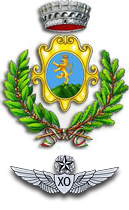Book Title:Polikarpov I-16, I-16 and I-153 Aces (Aircraft of the Aces) (Osprey)Author:Mikhail MaslovISBN:1846039819Category:HistoryFormat:PaperbackSummary:This entry in the well-known Osprey series covers three related Soviet fighter designs, the Polikarpov I-15, I-16 and I-153. It is a worthy addition to your combat aviation library.
These planes were products of a clever designer within a very restrictive and dysfunctional military system. Maslov’s research suggests that the radial-engined I-15 and I-16’s superficial resemblances to such American designs as the Curtiss Hawk family or the “GeeBee” racer, were coincidental or simply results of similar approaches to parallel design problems. Both the obstacles to design, construction and improvement in the Soviet system, and the notable wartime production successes of that system, are recounted as part of the story of the fighter.
So are the stories of the pilots who flew these planes in conflicts across the whole Eurasian continental mass. The book covers five war and “rumors of war” in which these iconic stubby Soviet fighters were employed: the Spanish Civil War, the Sino-Japanese War, the conflict between the Soviet Union and Japan referred to as Khalkin Gul or the Nomonhan Incident, and the Winter War between the Soviet Union and Finland – as well as, of course, World War Two, the Soviet Union’s “Great Patriotic War”.
Maslov puts the designs in the context of the larger Soviet strategy, the idea (as Field Marshall Zhukov so memorably put it) that “quantity has a quality all its own.” He writes,
“Although they were obsolescent in terms of flight and combat performance when compared to western fighter types such as the Hurricane, Spitfire and Bf 109, the Polikarpovs supported the concept of ‘mass’, which held that the enemy would be overwhelmed by sheer weight of numbers rather than by the quality of the weapons deployed.”
This was hard on the pilots sent to war in these machines. Their records, too, can be difficult to research, since Soviet culture mandated crediting “kills” to units rather than individual pilots. Pilots also were less likely to have a “personal” machine, particularly since mechanical troubles were frequent. Still, Maslov does a tremendous job telling the stories of the plane and its outstanding pilots through available records and when possible, firsthand accounts.
“Wings of Glory” players and other air combat historians will be interested in translated advice from a 1942 Soviet manual, quoted by Maslov:
“In turn, the I-16 can avoid combat with an attacking Me-109 if the pilot spots the enemy in good time. Usually, the I-16 should engage the ME-109 in a head-on attack. For the I-16, as with any other fighter type, a significant advantage can be gained by being above enemy aircrart…”
Although Maslov does not note it, the “head on attack” advice is more in keeping with the “mass” philosophy of combat, than with good tactical sense for a pilot who’d like to actually survive the battle. For one thing, the Me-109 was considerably better armed than the I-16.
In fact, one Polikarpov ace fell from favor, in a moment reminiscent of the famous “fighters’ revolt” in the Luftwaffe, by telling Stalin “You force us to fly wooden coffins!” (He was executed a few months later.)
The book is rich in anecdotes, particularly about such little-known conflicts as Khalkin Gul, and the service of Soviet volunteers in China. Indeed the I-15 and I-16 frequently served as “deniable” assets, aircraft supposedly operating in the forces of Republican Spain or of China but actually crewed by Soviet pilots. Maslov writes with insight, sympathy and objectivity, as an historian ought to.
Osprey’s usual quality color plates are included (and I suspect that, for serious modelers, a paper rather than electronic copy of this book may be critical). Aircraft illustrated are selected across the range of conflicts in which the Polikarpovs participated.




 Reply With Quote
Reply With Quote


Bookmarks